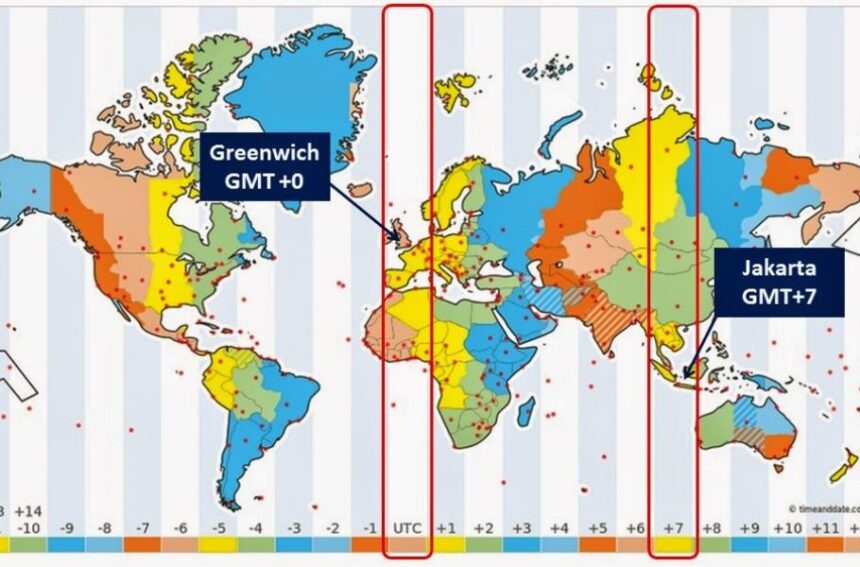Greenwich Mean Time (GMT) is the mean solar time at the Royal Observatory in Greenwich, London. It has historically been used as the world’s time standard, marking the starting point for every time zone across the globe. Current GMT was established in the 19th century and has served as a critical reference in both navigation and global communication.
The Origin and History of GMT
The concept of GMT began with the need for a universal standard of timekeeping, particularly as global navigation and trade expanded. Before GMT, local solar time was used, which led to confusion and inefficiencies. In 1884, the International Meridian Conference designated the Greenwich Meridian (longitude 0°) as the prime meridian. From this point, GMT was adopted worldwide as a standard reference.
GMT vs. UTC: What’s the Difference?
While GMT and Coordinated Universal Time (UTC) are often used interchangeably, they are not the same. GMT is a time zone, while UTC is a time standard. UTC is more precise and is based on atomic time, which doesn’t change with the seasons. GMT, on the other hand, is based on the Earth’s rotation and may vary slightly.
How is GMT Used Today?
Despite the introduction of UTC, GMT remains widely used in the UK and former British colonies. It’s also employed in military contexts, aviation, and broadcasting. For instance, the BBC often refers to times in GMT.
Current GMT and Time Zones
The current GMT time can be easily accessed online and serves as the base for calculating other time zones. All global time zones are defined relative to GMT, such as GMT+1 or GMT-5. This standardized system helps in scheduling international meetings, flights, and broadcasts.
Tools to Check Current GMT
Several online platforms provide the current GMT:
- WorldTimeBuddy
- Timeanddate.com
- Google Search (“current GMT”)
- Smartphone Clocks and Time Settings
These tools are especially useful for international travelers, remote workers, and business professionals managing across multiple time zones.
Importance of GMT in Travel and Communication
GMT is critical in ensuring consistency across time zones. Airlines schedule flights based on GMT to prevent confusion. Likewise, international business operations and digital communications depend heavily on this time standard to coordinate across countries and continents.
The Role of GMT in Navigation
Historically, GMT was essential in maritime navigation. Ships used GMT to determine their longitude at sea using a marine chronometer. Even today, GPS systems and navigational aids are rooted in the principles established by GMT.
How Daylight Saving Time Affects GMT
GMT itself does not change with daylight saving time (DST). However, many countries that adopt DST shift their local time zones relative to GMT. For example, the UK shifts from GMT to British Summer Time (BST), which is GMT+1.
Countries Using GMT All Year Round
Some countries stay on GMT throughout the year. These include:
- Burkina Faso
- Ghana
- Iceland
- Mali
- Mauritania
These countries do not observe DST, making GMT their consistent standard year-round.
Current GMT in the Digital Age
In today’s digital world, GMT plays a vital role in technology and data synchronization. Computers, servers, and cloud systems often default to GMT or UTC to maintain uniformity. This standardization prevents time-related errors in logging, security, and communication.
GMT and Financial Markets
Financial hubs like London rely on GMT, especially during trading sessions. Forex markets, stock exchanges, and cryptocurrency trading platforms often display times in GMT to ensure global participants can track activity seamlessly.
Educational and Scientific Applications
GMT is frequently used in scientific research, including astronomy and space exploration. Observatories and space agencies record events in GMT to maintain accuracy. Educational institutions also reference GMT in geography and world history studies.
The Future of GMT
With global digital integration, GMT remains relevant. While UTC may be technically superior, GMT’s historical significance and widespread usage continue to make it a cornerstone in global timekeeping. Advances in atomic time may refine standards further, but GMT will always serve as a recognizable reference point.
Conclusion
Greenwich Mean Time is more than just a time zone it’s a global reference that has shaped modern communication, travel, and technology. Despite the rise of atomic clocks and UTC, GMT continues to play a pivotal role in international synchronization. Understanding the current GMT helps individuals and organizations operate efficiently across borders, ensuring that the world remains connected in time.



